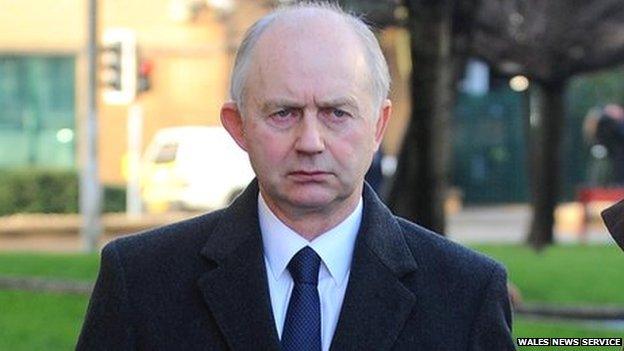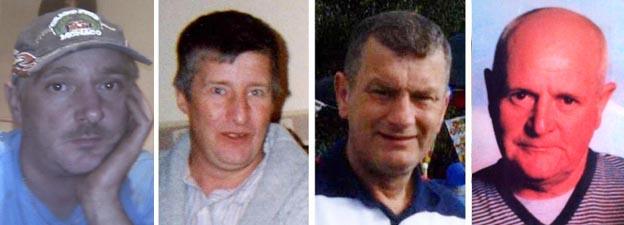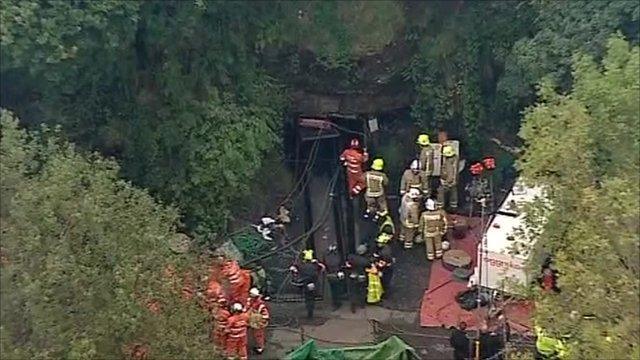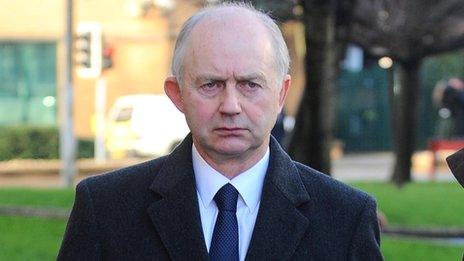Gleision deaths: 'Possible' mine check found no water
- Published

Malcolm Fyfield said the small amount of water he found the day before the incident was not unusual
Water which flooded a mine killing four workers may not have been there the day before when the area was inspected, a jury has heard.
Geologist Dr Alan Cobb said it was "possible" and "probable" that the water collected after manager Malcolm Fyfield inspected it.
He told Swansea Crown Court water could have rushed in from an older Victorian mine underneath Gleision drift mine.
Mr Fyfield and owners MNS Mining Ltd deny manslaughter charges.
David Powell, 50, Charles Breslin, 62, Philip Hill, 44, and Garry Jenkins, 39, drowned when water gushed into the area they were working in after they blasted into a flooded old section of the mine.
The miners had been using explosives to create a tunnel into the old workings to improve air circulation.
Dr Cobb, a chartered engineer and expert on the behaviour of underground water giving evidence on behalf of MNS Mining Ltd, said water could have flowed in from a mine underneath Gleision if the workers had made a connection with the workings.
He told the court it was impossible to say where the water had come from, but said it could have been stored in the sandstone the mine was carved from.
Mr Fyfield had told the jury he noticed only a "ponding" of water when he inspected the area the day before the incident.
Dr Cobb agreed it was possible, if not probable, that the water had not been there at the time of the inspection.
The trial continues.

Garry Jenkins, 39, Philip Hill, 44, David Powell, 50, and Charles Breslin, 62, were killed in the mine
- Published9 June 2014

- Published4 June 2014

- Published3 June 2014

- Published2 June 2014

- Published27 March 2014

- Published21 May 2014

- Published31 March 2014
